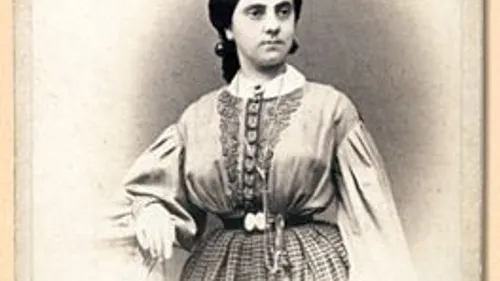Stay in the Loop
BSR publishes on a weekly schedule, with an email newsletter every Wednesday and Thursday morning. There’s no paywall, and subscribing is always free.
Brahms all the way
PCMS presents the Brahms Sextets

The Philadelphia Chamber Music Society (PCMS) winds down its season this week with the Brahms Sextets. The May 11, 2018, concert gave a rare opportunity to hear those two extraordinary works in tandem, each offering suggestive autobiographical clues about Brahms’s early development.
The performers included Jaime Laredo and Sharon Robinson of the Laredo-Kalichstein-Robinson Trio; Milena Pajaro-van de Stadt of the Dover Quartet, heard in recital at the Perelman last October; Keith Robinson, Sharon’s brother (another sibling, Hal Robinson, is principal bass of the Philadelphia Orchestra); Pamela Frank; and violist Nokuthula Ngwenyama.
Sharon Robinson’s cello dominated the First Sextet, assuming what sounded like a solo role at each entrance, while Jaime Laredo’s violin, muted in the first half of the recital, came alive after intermission. These players all have Brahms in their blood, and in performing both of his String Sextets in one evening — each running roughly 40 minutes — they gave us a rare opportunity to see the composer’s youthful mastery maturing in a single format.
Beethoven and Brahms
The lines in instrumental chamber music are generally drawn between sonatas (one or two instruments), works for between three and five instruments, and works for six players or more. Go beyond five instruments and a recital stage begins to look crowded, with the repertory correspondingly thinner.
Beethoven’s Septet in E-Flat was among his most popular works, as was Mendelssohn’s youthful Octet, but works for six players were a distinct rarity until Brahms produced his Opp. 18 and 36. They were immediately popular, particularly the First, and their influence could be felt in sextets produced by later 19th-century composers, notably Dvorak’s Sextet, Op. 48; Tchaikovsky’s Souvenir of Florence; and Schoenberg’s Transfigured Night.
Brahms’s decision to write for six players may have been influenced by his diffidence in competing with Beethoven in the form he had made uniquely his own: the string quartet. We do know Brahms discarded 20 drafts for a string quartet before producing his first published one at age 40.
But six players are not easier to write for than four. The skill and invention Brahms deploys in utilizing his performers in both sextets — particularly the second, in G major — display his formidable powers of coloristic and dynamic balance.
The melodic material of the first two movements of the first sextet are particularly distinguished, with Brahms’s characteristically deep warmth. The music is plush at times, but Brahms keeps his inner voices busy, with clipped accents in the violins to stir things up and delicate pizzicatti presaging the close of both the Allegro non troppo first movement and the Poco allegro finale.

There are allusions to Beethoven’s Septet and other works by Beethoven and Schubert along the way, but there’s never any doubt that Brahms is his own man. The voice that would dominate late 19th-century chamber music is fully present here.
Love and loss
The Second Sextet, composed five years later, is more contrapuntal in nature, and although less lyrical, it is no less impressive. Its four movements are closely linked thematically, with intervals of fourths and fifths predominating. Key signatures seem at times uncentered, and in the first movement, a tremolo in the viola is the only anchor as bits of melodic argument toss among the other instruments.
The Poco adagio third movement, a theme with five variations, is the heart of the work. If it sometimes looks back toward late Beethoven, it also anticipates the slow movement of Bruckner’s Quintet in F — or, rather, Bruckner closely looked at Brahms.
Beethoven, Brahms, and Bruckner were all lifelong bachelors. Brahms’s youthful passion for Clara Schumann was apparently never consummated and, although the First Sextet contains no overt reference to Clara, he did dedicate a piano transcription of its second movement to her.
The Second Sextet contains what appears to be a more directly amorous statement in a repeated figure that alludes musically to the singer Agathe von Siebold in its opening movement. If this was intended as a gesture of courtship — Brahms had already dedicated two song cycles to Agathe — he did not endear himself when he wrote that he did not wish to “wear fetters.” Agathe promptly broke off their relationship. Music would remain Brahms’s enduring mistress.
What, When, Where
The Brahms Sextets. Jaime Laredo and Pamela Frank, violins; Milena Pajaro-van de Stadt and Nokuthula Ngwenyama, violists; Sharon and Keith Robinson, cellos. Philadelphia Chamber Music Society. Johannes Brahms, String Sextet No. 1 in B-flat Major, Op. 18; String Sextet No. 2 in G Major, Op. 36. May 11, 2018, at the Kimmel Center's Perelman Theater, 300 S. Broad Street, Philadelphia. (215) 569-8080 or pcmsconcerts.org.
Sign up for our newsletter
All of the week's new articles, all in one place. Sign up for the free weekly BSR newsletters, and don't miss a conversation.

 Robert Zaller
Robert Zaller